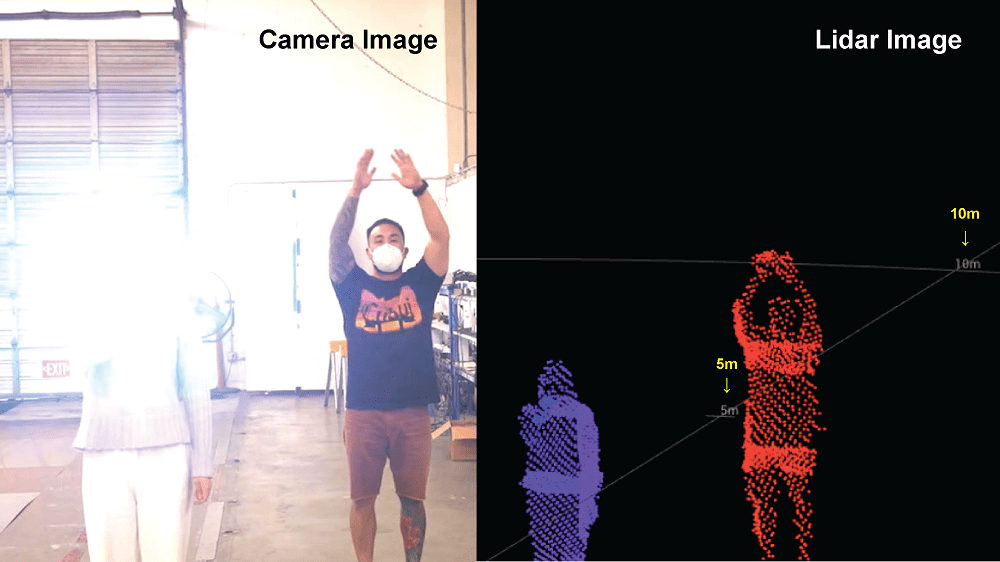



Despite the efforts of leading OEMs, fully autonomous (“Level 4”) cars have not yet arrived. While the industry is still working to get Level 4 vehicles on the road, there has been increasing consumer interest in better-advanced driver assistance systems (ADAS), even for vehicles with lower levels of autonomy.
Lidar, a technology previously associated with fully autonomous driving, is taking an increasingly important role in vehicle safety in ADAS. In fact, consumer vehicles can start benefiting from lidar today, with their superior perception capabilities proven to help significantly reduce both the frequency and severity of accidents.
Current sensor technologies, including camera and radar, have been supporting ADAS for several vehicle generations, proving to be potent in many scenarios. However, just by nature of how they work, they have several limitations that prevent them from delivering accurate, error-proof perception capabilities thereby leaving a significant risk of accidents.
Let’s start with cameras. One of their biggest limitations is their reliance on good lighting and the environment. Their performance gets negatively impacted at night, in direct sunlight and in inclement weather. Another limitation is that they provide 2D imaging, making it difficult to determine the accurate 3D size, location and velocity of objects on the road.
This can be compensated to a certain degree with the development of computer vision, but current algorithms have many limitations.
Radar is a 3D sensing technology and performs well under various lighting and environmental conditions, but lacks the spatial resolution needed for accurate object detection, tracking and classification.
For instance, radars might be able to tell a driver that there is an object a few hundred feet down the road, but cannot provide data accurately enough to help determine what type of object it is, or whether it is in the same lane as the driver or, in fact, on the shoulder of the road.
Consequently, ADAS solely dependent on radars and cameras suffer from high false positives and false negatives, leaving the automotive industry a major gap for 24/7, accurate perception from near to long-range.
Lidar, perceived as an additional pair of infallible “eyes,” is a perfect technology to fill this gap. Instead of outperforming cameras or radars in every aspect, lidar complements a powerful sensor suite by addressing the specific challenges faced with cameras and radars.
Lidar serves as its own source of illumination, which enables them to perform in various lighting, weather and environmental conditions. Unlike the busy camera image, lidar data delivers a high concentration of useful data to provide true 3D information, including distance, dimensions and velocity.
Lidar can also detect the surface reflectivity of an object, helping determine what type of object it is. With high angular resolution even at long range, lidar offers the high-precision perception needed to really elevate ADAS to a whole new level of safe autonomy.
Lidar should work hand in hand with cameras and radars to safeguard every vehicle, regardless of its level of autonomy.
However, due to common misconceptions about lidar’s high costs and low reliability, the benefits have not been able to fully unfold to many automakers, let alone consumers. The good news is that low cost, reliable ADAS lidar is in fact achievable with the right technology.
While some lidar technologies compete to deliver the longest range or highest resolution, they are far from being mass-market scalable. It is important for the ideal ADAS lidar to achieve the right balance between performance, reliability and cost.
In other words, one needs to choose a mature and validated technology path and have a modular design that is manufacturable in high volumes using inexpensive and easily accessible components.
Like a regular car part, an ADAS lidar should be made to last with verified automotive-grade reliability. This has been achieved by only some lidar providers keenly focused on the ADAS market. Additionally, they have managed to reduce the size and power consumption of the lidar to enable seamless, multi-location vehicle integration. By 2023, consumers will be able to purchase everyday passenger cars equipped with lidar that are discreetly hidden and barely noticeable. What they will notice, however, is the significantly improved level of safety enabled by lidar perception.